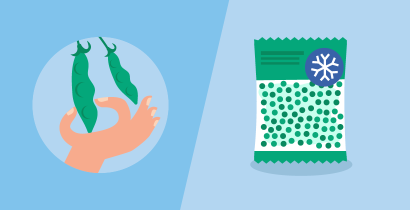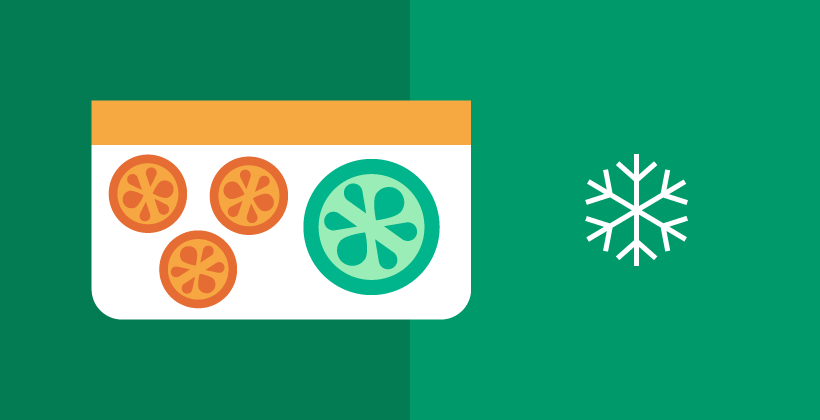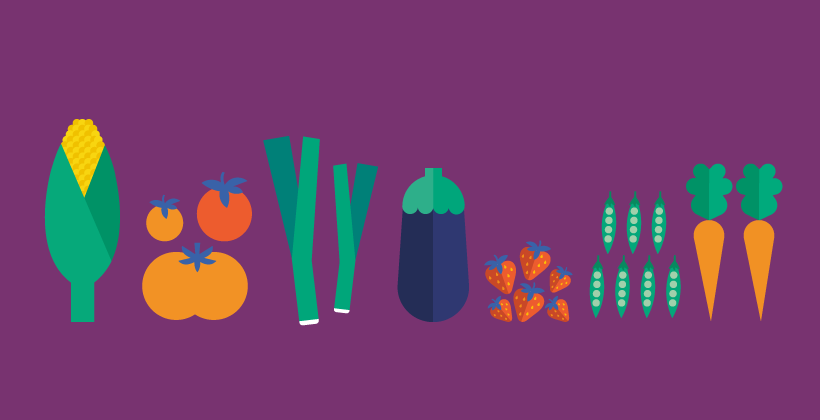How Does Freezing Preserve Food and Maintain Quality?
Last Updated : 01 March 2002Frozen vegetables and herbs, ready-to-heat meals and gourmet ice cream - the variety of frozen foods in supermarkets has grown markedly since the introduction of frozen food in the 1930's. In this article Food Today looks at the process of freezing and its role in helping to preserve foods and provide convenience and variety.
Using cold to help preserve foods dates back to prehistoric times when people used snow and ice to help preserve their hunt. It is said that Sir Francis Bacon contracted fatal pneumonia after attempting to freeze chickens by stuffing the carcasses with snow. It was not until the 1930's that frozen foods started to be sold commercially following the discovery of a method of quick freezing.
How does freezing preserve food and keep it safe?
Freezing delays spoilage and keeps foods safe by preventing microorganisms from growing and by slowing down the enzyme activity that causes food to spoil. As the water in the food freezes into ice crystals, it becomes unavailable to those microorganisms that need it for growth. However, most microorganisms, (with the exception of parasites), remain alive when frozen so foods must be handled safely both before freezing and once defrosted.
What effect does freezing have on the nutrient content of foods?
Freezing has very little effect on the nutrient content of foods. Some fruits and vegetables are blanched (immersed in boiling water for a short period) before freezing to inactivate enzymes and yeasts that would continue to cause food spoilage, even in the freezer. This process can cause some of the vitamin C (15 to 20%) to be lost. In spite of these losses, vegetables and fruits are frozen in peak condition soon after harvesting and are often higher in nutrients than their "fresh" counterparts. Harvested produce can sometimes take many days to be sorted, transported and distributed to stores. During this time, vitamins and minerals can be slowly lost from the food. Fresh soft fruits and green vegetables can lose as much as 15% of their vitamin C content daily when kept at room temperature.
There are almost no vitamin and mineral loses from frozen meats, fish and poultry because protein, vitamins A and D and minerals are not affected by freezing. During the defrosting process, there is a loss of liquid containing water-soluble vitamins and mineral salts, which will be lost in the cooking process if this liquid is not recovered.
Are there any foods that should not be frozen?
Freezing can damage some foods because the formation of ice crystals causes breakage of the cell membranes. This has no adverse effects in terms of safety, (indeed some bacterial cells would also be killed), however the food loses its crispness or firmness. Examples of foods that do not tolerate freezing well include salad vegetables, mushrooms and soft fruits.
Foods with higher fat contents, such as cream and some sauces, tend to separate when frozen.
Commercial freezing rapidly freezes foods so that smaller ice crystals are formed. This causes less damage to cell membranes so that quality is even less affected.
How long can food be kept in the freezer?
Foods can be safely kept in the home freezer for 3 to 12 months without loss of quality. Keeping times vary depending on the food and the product label provides the best indication of keeping time.
Freezer tips
- Freezers should be kept at or below -18°C
- In contrast to refrigerators, deep freezers should be packed tightly as this allows the freezer to function better.
- Using appropriate packaging such as freezer bags and plastic containers will help protect foods and prevent "freezer burn".
- Avoid placing hot foods straight into the freezer as this will raise the freezer temperature and may adversely affect other foods. Cool foods before freezing.
- Make sure that frozen food is completely thawed before cooking. Food that has been frozen and thawed should never be refrozen.
References
- Fellows, PJ. Food Processing Technology - Principles and Practice. 2nd Edition. Woodhead, London, 2000.



